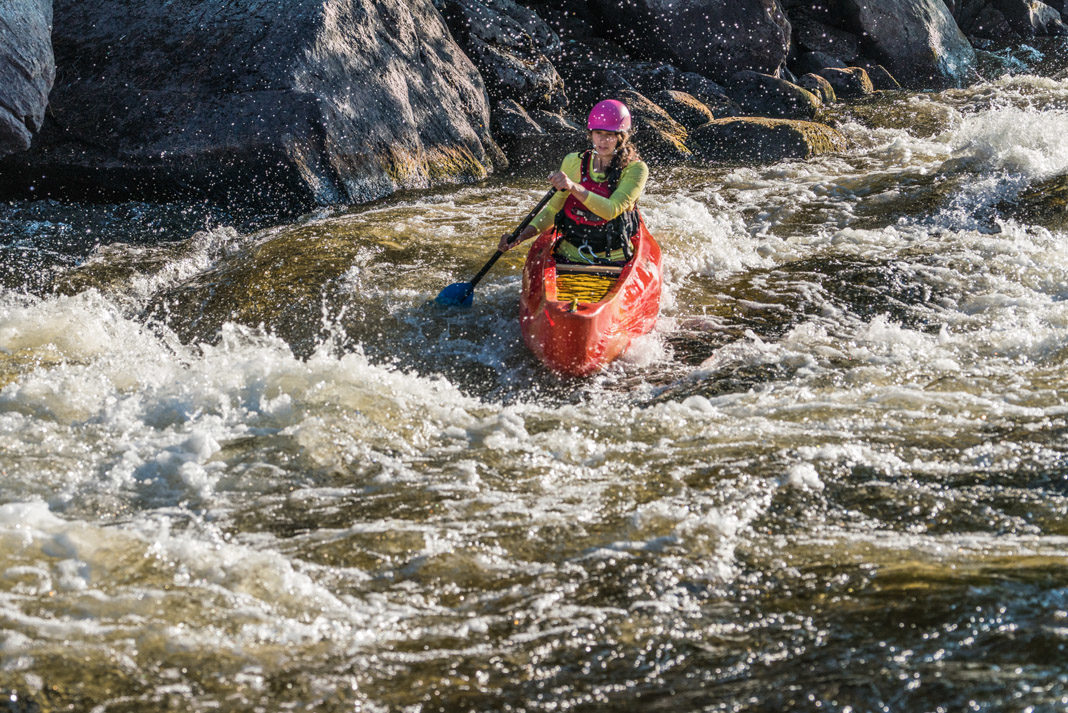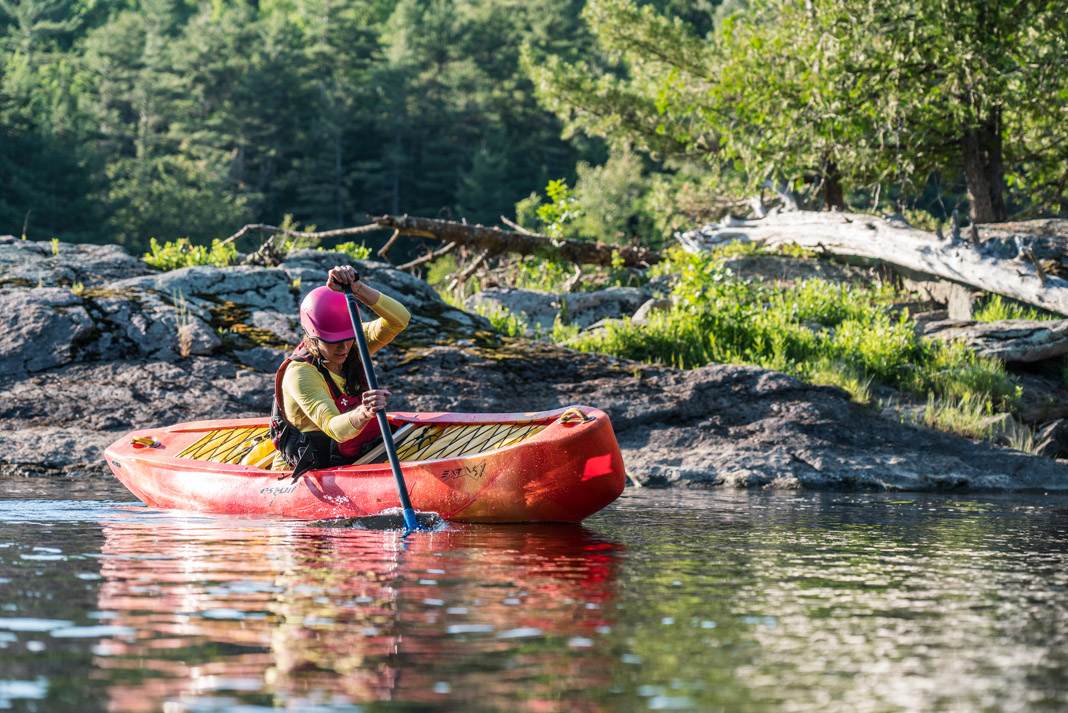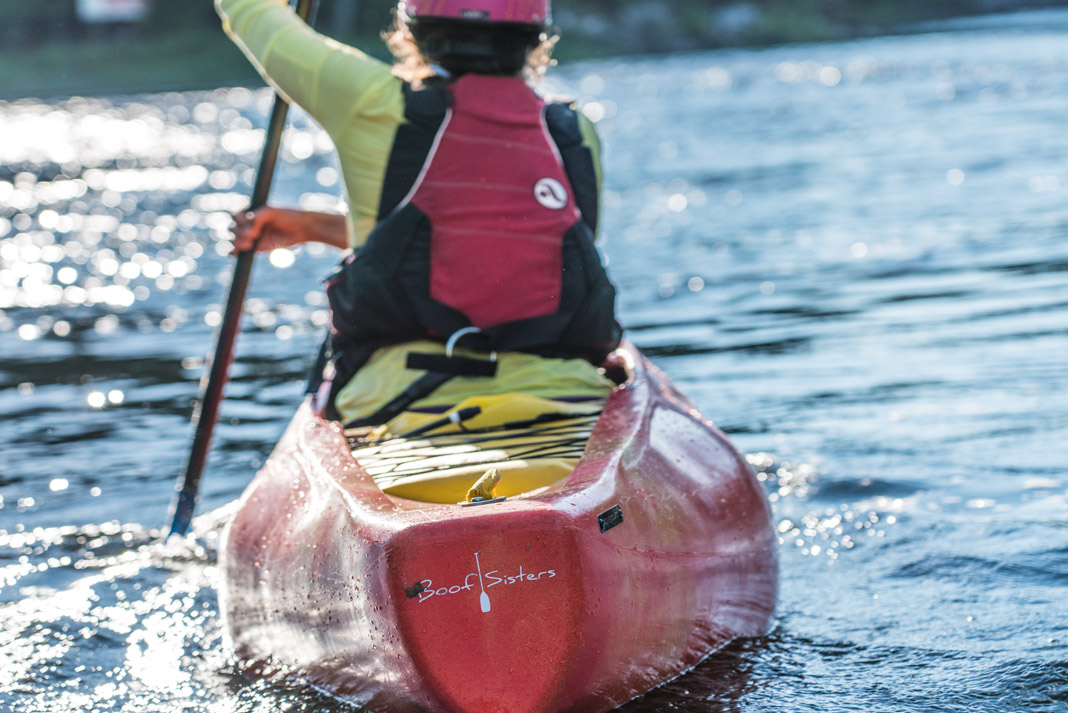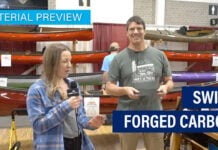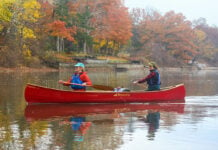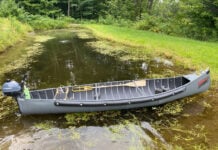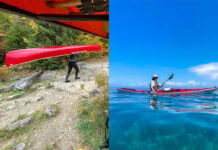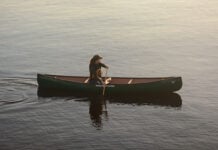Esquif Canoes founder and owner Jacques Chasse has never been one to shy away from a new project. In fact, he’s built his brand and his whole canoe building business around chasing dreams.
Esquif Canoe’s Extasy OC1 Specs:
Length: 9 ft
Width: 26 in
Weight: 41 lbs
Gunwales: Integrated
Price: $2,150 USD/$2,150 CAD
esquif.com
Long before Chasse added his Prospector series of tripping canoes to his line up—now his top-selling models, as you might expect—he built his reputation on creating innovative, yet very specialty whitewater solo canoes.
Even today, Esquif offers 12 different OC1 models, not to mention the tandem Blast and the Vertige X, which can be either outfitted solo or tandem. Over the last 20 years we’ve reviewed the Detonator, Nitro, Prelude, Spanish Fly, Zoom, Zepher, Raven, Taureau, L’Edge Lite and Superlite and Spark, a trip down memory lane for any longtime open boater.
What all these boats have in common is the slim chance for even mediocre commercial success, but it didn’t stop Chasse and his team of enthusiasts and designers from cranking out boat after boat they themselves wanted to paddle.
Canoeist Sabrina Barm’s creek boat design for smaller paddler’s
The men behind these designs are a who’s who list of top-level canoeists including Andrew Westwood, Mark Scriver, Dooley Tombras and John Kazimierczyk, just to name a few. An impressive roster of talent, but not one woman.
The Extasy canoe is so radically different than anything we’ve ever tested.
It should be of no surprise Chasse agreed when Sabrina Barm approached him. About building a polyethylene creeking and river running canoe specifically designed for smaller paddlers, namely women.
Barm is the first female canoeist to compete in North Carolina’s infamous Green River Race and has competed in two Adidas Sickline Extreme Kayak World Championships paddling OC1 against a field of kayakers. Let’s just say she’s a badass open boater.
Barm is also an automotive engineer with a background in boat design with a few theories on acceleration, precision, hull speed and ergonomics.
With a shoestring budget, she crunched her numbers in mathematical models and manually shaped two foam prototypes before sending Esquif the final version to produce the mold.
A radically different solo canoe by Esquif
The Extasy canoe is so radically different than anything we’ve ever tested. But let’s begin the review by not calling it a girl canoe. However, finding test pilots for the OC1 Extasy wasn’t as easy as you’d think. We were looking for intermediate to advanced open canoeists between 110 and 150 pounds.
Mel Lindsay is a Head open canoe instructor the Paddler Co-op with time paddling the Ocoee, L’Edge, Blackfly Octane and Ion and had jumped in the Extasy at Ain’t Louis Fest, just long enough to be excited about helping write this review.
“I’m a bit shaky, wobbly, unstable, and it’s hard to find my balance,” Lindsay told me after her second swim in the first few minutes in the Extasy. Soon she was able to feel out her tilt and discover how the boats round bottom allows for quick tilts. She had to build up some trust up in the secondary stability and stop fighting it.
Esquif’s small canoe is 26 inches wide
The key to enjoying the Extasy is to stop looking at it. Let me explain. When you first get in the Extasy you feel like you’re paddling a lawn dart. It’s asymmetrical and barely wide enough for my hips to fit between the plastic gunwales and it keeps getting narrower.
At the bow, it is only four inches wide, the same width as a Dagger Axiom 8.5 kayak. Just behind the saddle it’s wider, 26 inches, an inch wider than my Ocoee. So the secret is to stop looking at it and get out of your head the Extasy is tippy. Paddle it like you’d paddle an Ocoee.
Why an Ocoee? According to Lindsay, “Similar to the Ocoee, it was really easy to get the boat where I wanted it to go. Once I felt smooth in it, I just had to look where I wanted to go and use my lower body to point it there with a few mindful strokes. It took me until the third day to really feel and trust it.”
I can’t get over how easy this solo canoe is to pivot. Being neutral or slightly back you can drop the slightest outside edge and change direction anywhere, it’s crazy. An offside tilt frees the pointy bow and it snaps around. This is critical for running tight rivers; even more fun surfing steep waves pinning the bow.
Cruise into an eddy and be a bit forward on a draw or cross-bow draw and the Extasy carves like an electric knife through hot butter. The secret again is not to look at the bow, just look where you want to go and paddle it like you stole it.
What do paddlers like best about Esquif Canoe’s Extasy creek boat?
I asked Lindsay what she liked most about the Extasy. She couldn’t pick just one thing. Her list reads like the wish list of every female open canoeist I’ve ever met.
“With the beefy, heavy and slower creek boats, I struggle to generate enough speed and maintain momentum. The Extasy allows me to gain speed and maintain momentum with ease, allowing me to enjoy the river and focus on my lines and moves.”
“In wider boats such as the Option and the L’Edge, I struggle to roll. But the Extasy is narrow enough to harness my hip flick and effective core motion. To top it off, the Extasy is the lightest solo boat I’ve ever paddled and portaged. Loading the car is a dream.”
So why shouldn’t we call the Extasy a women’s solo canoe? Because dudes are going to paddle it. I loved it. Mel’s boyfriend loved it. By the numbers, we’re both too big for it and barely fit between the gunwales, but we still loved paddling it.
So I called Chasse and asked the obvious question. The answer? The project Extasy X is already in the works. Gentlemen, we can expect to see a larger thermoformed T-Formex version of Sabrina Barm’s rapturous delight sometime soon.
Fast and precise, but only if you pretend it’s not there. Paddle the river, not the boat. Feature Photo: Scott MacGregor



